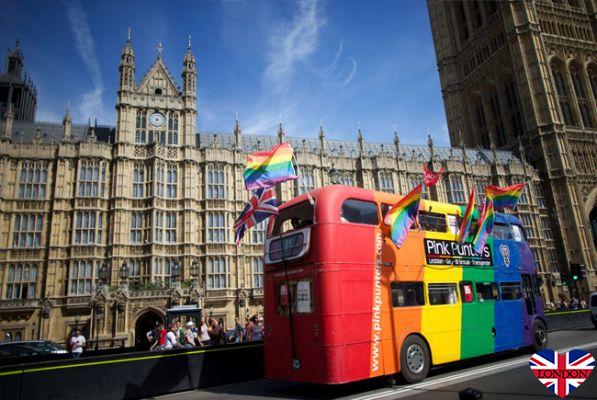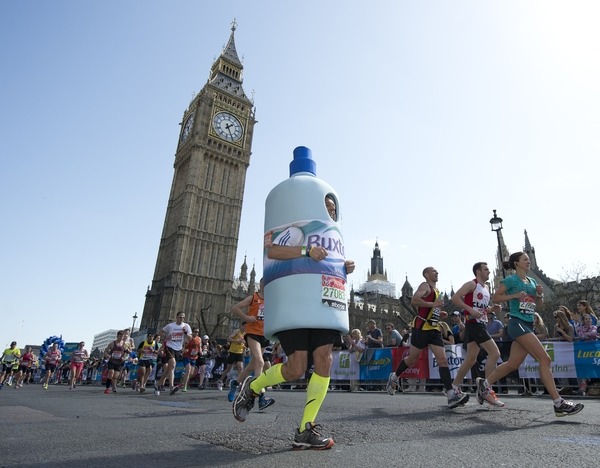
Want to know what are the most famous traditions in London? You're in the right place! At ForLondresLovers we'll tell you everything you need to know about the best traditions in London. Let's get to it!
The 5 most famous traditions in London
England is a place rich in traditions and customs, some more unusual and some more common, but which are part of the local culture. The Anglo-Saxon people in many years of history have collected festivals and events of all kinds and that not everyone knows.
Cheeserolling, the Cooper Hill Cheese Festival
Cheeserolling is a competition, which takes place in Glouchester , where participants not only have to run, but also have to chase a cheese rolling down a slope at 100 kilometers per hour.
The origins of this particular game seem to derive from ancient Welsh traditions, although in fact other sources reveal that this competition was practiced by the Romans long ago.
It is traditional for participants in this competition to be born or reside in the local village of Brockworth, but now the appeal of the whimsical game has attracted people from all over the world to take part in the competition.
For the winner, there is no cup, but the much-desired Glouchester cheese prepared for the occasion and according to tradition.
The Maypole Dance
Maypole Dance is a popular dance form, born in Western Europe. It consists of a folk dance where dancers dance around a pole, which represents the May tree, which stands as a symbol of prosperity and well-being.
In the traditional dance, the women have to dance in one direction and the men in the opposite direction without making mistakes. Before the dances, the May Queen is chosen: a girl dressed in white who scatters flower petals to the crowd and only then can the dance begin.
During the time of Henry VIII, the May tree dance united both the nobility and the people: it was an opportunity to forget class differences and celebrate together.
Pancake Race
In England, the Pancake Race is a custom held during the Carnival celebrations. This event takes place on Shrove Tuesday.
Participants, often masked, have to walk a short distance holding a pan with a pancake . The difficulty is to make the pancake jump from the start of the race to the finish line without dropping it.
This celebration was born from a legend 500 years ago, where it is said that a lady while preparing the typical pancakes, heard the bells of the church and to hurry she took the pancakes with her to the church, making them fry so as not to burn them.
This strange tradition has been passed down through the ages and still entertains the whole population of Britain today.
Pearly Kings and Queens
The Pearly Kings and Queens are an organisation founded by an orphan, Henry Croft, in 1875.
Henry, born in 1862, had lived the first years of his life in Victoria Workhouse and at the age of 13 left the orphanage to work as a sweeper. Inspired by the Costermonger, the peddlers who helped each other to survive, the orphan decided to start doing activities that could benefit the community.
In order to raise the necessary funds to help the community, Henry decided to start collecting as many pearl buttons as possible. In the end, thanks to all the buttons collected, he sewed a dress completely covered in mother-of-pearl.
Thanks to the help of the Costermongers, Henry created a real supportive family, managing to take care of many people and in particular orphans.
Even today, on June 3rd, British people wear dresses decorated with mother-of-pearl buttons to commemorate the Workhouse orphan.
Straw Bear Day
Straw Bear Day is the festival that celebrates the beginning of the agricultural year in Britain.
Every year the British prepare a costume to be worn by a lucky chosen one who will have to go from house to house to perform the bear dance in the hope of a good harvest, receiving in exchange for food, beer or at best money.
This tradition, still celebrated by the British today, has very ancient origins and a curious history.
The festival takes place in the town of Cambridgeshire and over time has been enriched with numerous events, during which there is a parade with:
- musicians
- dancers
- farmers
At the end of the festival takes place the "Bear Burning": the straw bear is burnt and then its costume is sewn with the straw of the New Year harvest.



























